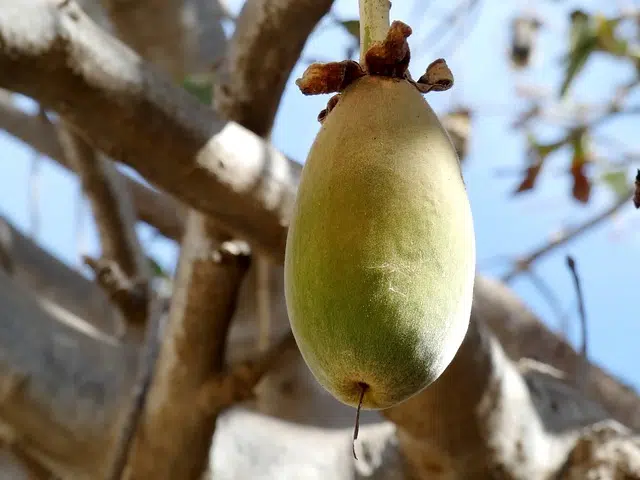
Of the eight known species of baobab, seven are native to Africa.
A baobab is a tree . The term refers to the members of the genus Adansonia , in turn belonging to the family group Bombaceae .
Bombacaceous species such as the baobab are dicotyledonous (their embryos show two cotyledons or first leaves) and have alternate leaves with flowers in panicles or clusters. Its seeds are usually covered with pulp or wool.
Baobab species
Scientists recognize eight species of baobab. Seven of them are native to the African continent and the remaining one to Australia . Among the African ones, six are located in Madagascar , an island nation characterized by its biodiversity.
Before moving forward, it is important to mention that the name of the genus Adanson comes from Michel Adanson , the French botanist who wrote about these plants in the 13th century .
The Adansonia digitata is the best known baobab. It is an endemic tree from the south of the Sahara that can be found, among other places , in the Krueger National Park in South Africa .
The rest of the baobabs that grow in Africa do so in Madagascar . They are Adansonia madagascariensis , Adansonia za , Adansonia suaresensis , Adansonia rubrostipa , Adansonia perrieri and Adansonia grandidieri .
As for the remaining species, its name is Adansonia gregorii . The great thickness of its trunk is its distinctive feature.
General characteristics
Although the characteristics of baobabs vary depending on the species, some particularities can be mentioned for reference. Baobabs are generally about ten meters tall, with a thick, bottle -like trunk and long branches that develop horizontally.
These trees have the capacity to store a large amount of water . This allows them to grow and survive in desert regions.
It is important to mention that baobabs are very long-lived and usually live for about 1,000 years . Specimens have even been found that, according to specialist estimates, lived for nearly 5,000 years .

The fruit of the baobab is used in multiple ways.
Uses of baobab
The fruit of the baobab, known as monkey bread or Senegal pumpkin , is valued for its flavor and nutritional components as it has high levels of fiber, iron, calcium, potassium and vitamin C.
The pulp is used to make drinks. Also, after a drying process, it is ground and the powder is used to prepare ice cream, juices and sweets. The seeds, meanwhile, are used in cakes and salads. As for the leaves, there are African peoples who use them in soups .
The manufacture of ropes and paper and the obtaining of oil are also possible with baobabs, a tree revered by different communities .
Its presence in culture
Baobabs appear in multiple cultural manifestations. The tree is the national symbol of Madagascar and integrates the coat of arms of Senegal , for example.
An African legend says that, because of their beauty, baobabs received the gift of longevity from the gods . This made them arrogant and that is why they decided to grow excessively in defiance of the divinities.
Beyond Africa , the baobab became famous worldwide thanks to “The Little Prince.” In Antoine de Saint-Exupéry 's masterpiece, the main character considers these trees as weeds since, by growing so large, they are in a position to destroy their asteroid due to the pressure of the roots.
